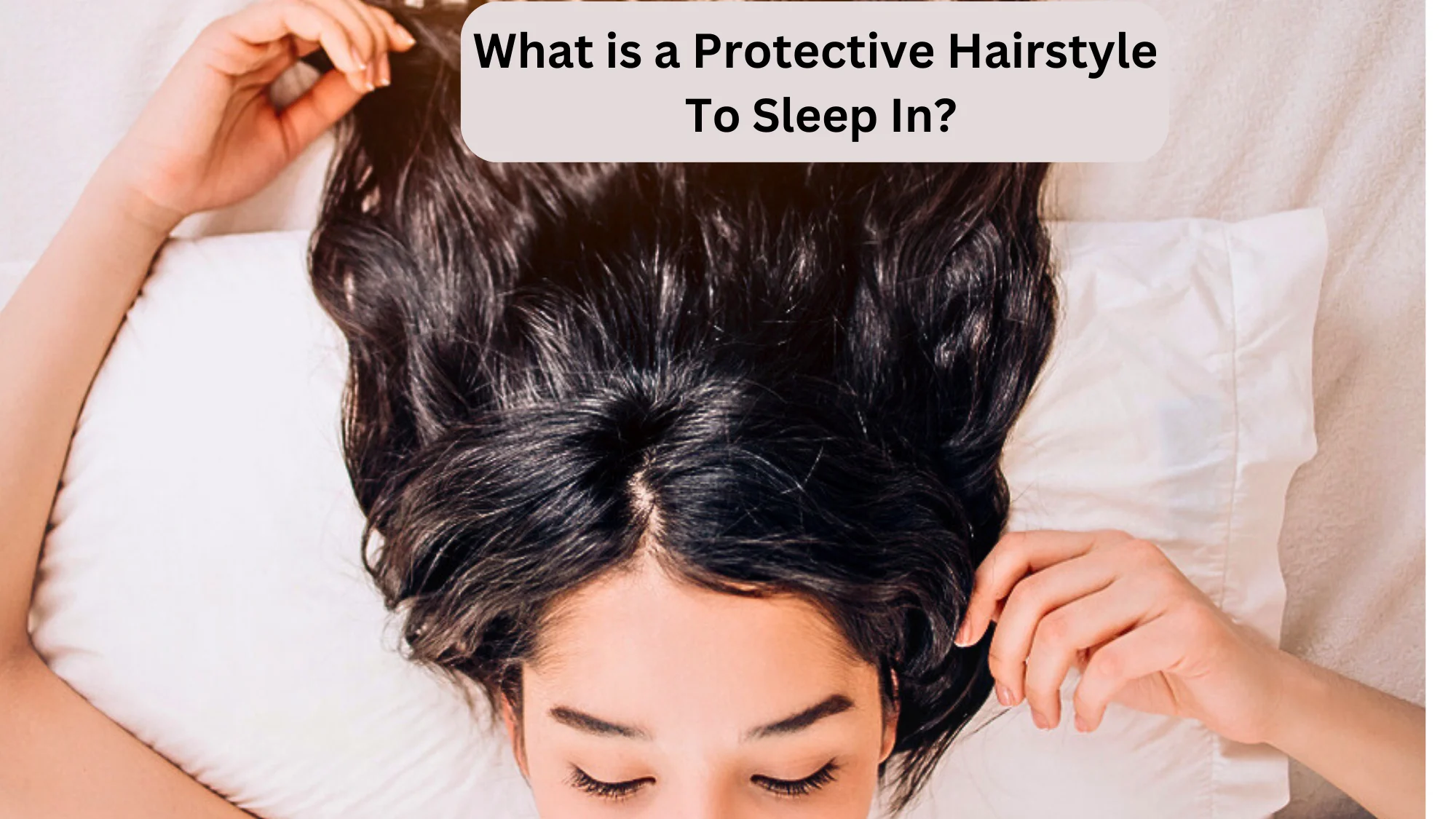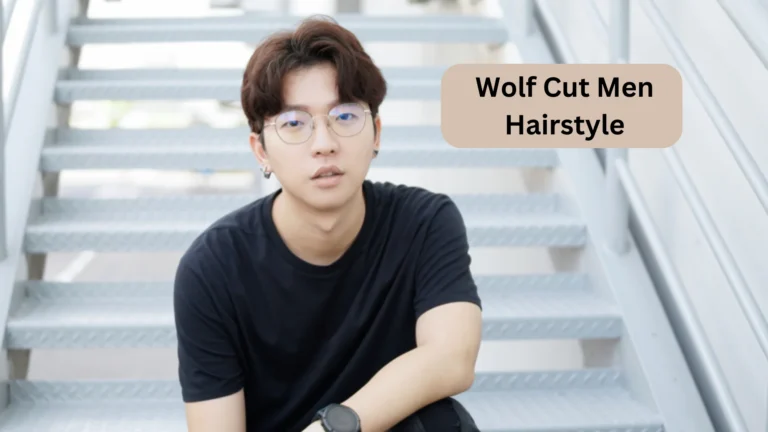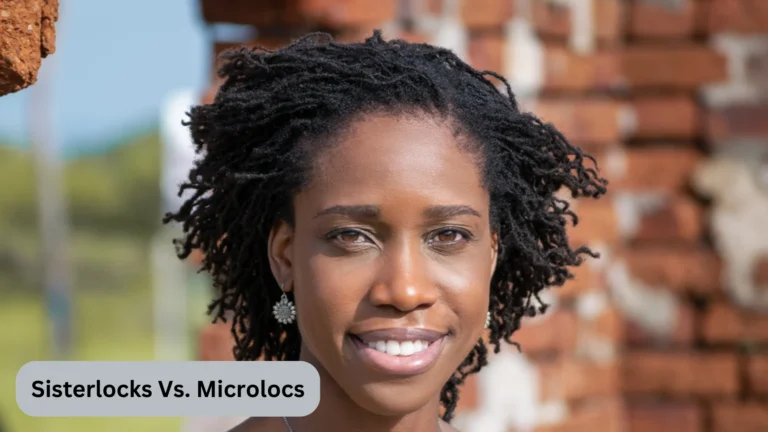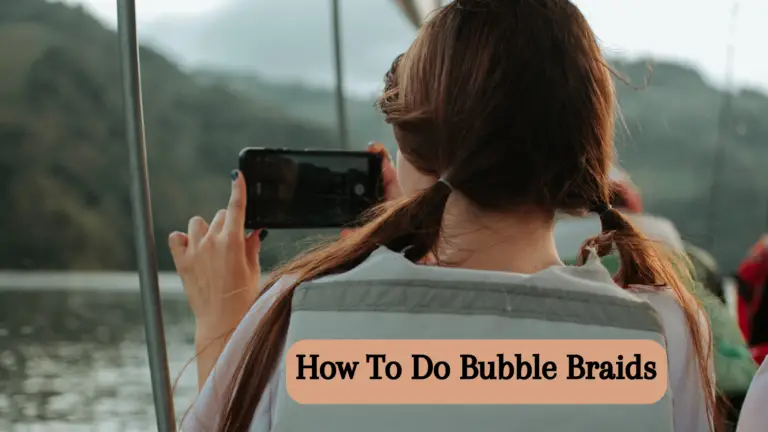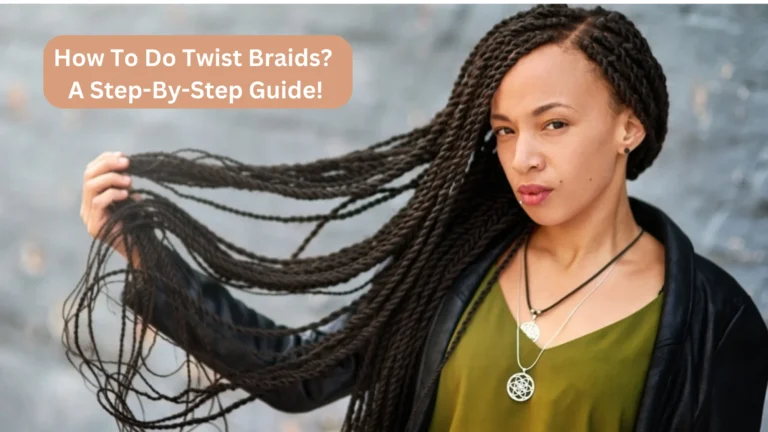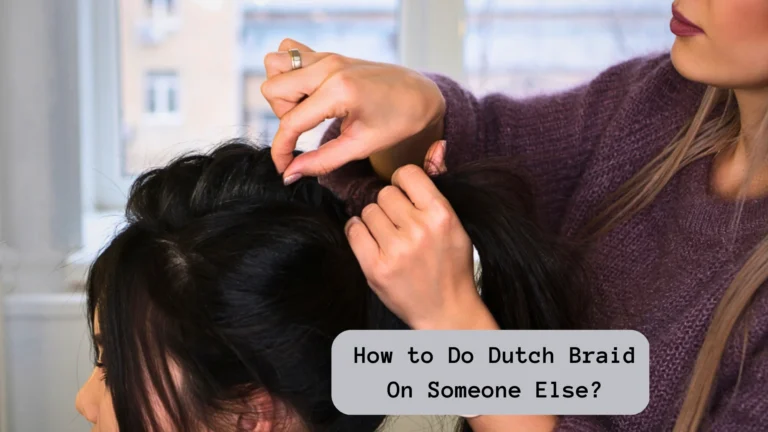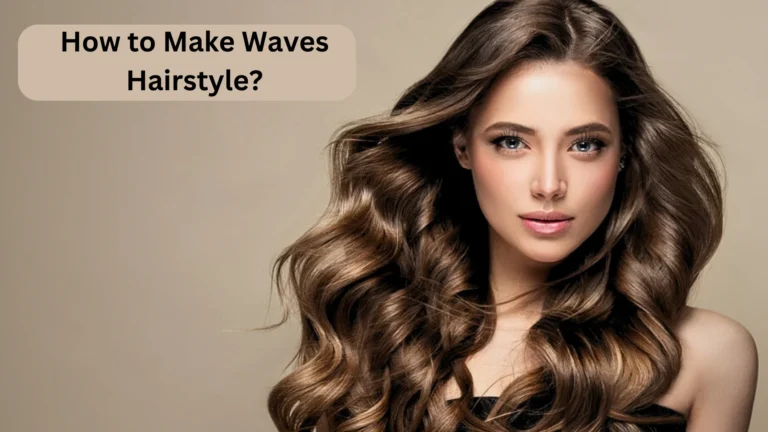What is a Protective Hairstyle To Sleep In? Read The Best Hairstyles For Bedtime!
A protective hairstyle is a hairdo that minimizes friction, and tension on your hair, which can lead to breakage and ultimately hair damage. Sleeping in protective hairstyles is an excellent way to maintain healthy hair and also to secure your style overnight. Protective hairstyles are not only practical, but they can also be stylish and versatile.
In this article, I am going to discuss what is a protective hairstyle to sleep in and provide you with some tips on how to avoid hair breakage while sleeping. So, let’s begin!
What is a Protective Hairstyle To Sleep In?
Some popular protective hairstyles for sleeping include braids, buns, twists, and wraps. This hairstyle is designed to minimize damage to your hair while you sleep. It works by keeping your hair friction-free and reducing tangles, and breakage, which can cause damage to your hair. Let’s discuss these protective hairstyles and how to make them correctly:
Braids

Braids are a classic protective hairstyle that is the best hairstyle to sleep in for hair growth. They help to distribute the weight of your hair evenly, reducing tension on your scalp and preventing hair breakage. You can opt for simple three-strand braids or more intricate styles such as box braids or cornrows.
How to Braid Correctly?
Here are some steps on how to braid your hair correctly:
- Before you begin braiding, make sure your hair is combed properly. Use a brush to detangle your hair, starting at the ends and working your way up to the scalp.
- Depending on the thickness of your hair, you may want to divide it into two or three sections. Use clips or hair ties to keep the sections separate.
- Take a small section of hair from the outer edge of one of the sections and cross it over the top of the section, adding it to the opposite side.
- After that, take a small section of hair from the outer edge of the opposite section and cross it over the top of that section, adding it to the original section.
- Continue braiding in this way, alternating sides, until you reach the end of your hair.
- Once you reach the end of your hair, use a hair tie or elastic band to secure the braid in place. Be gentle when tying the band, as pulling too tightly can cause damage to your hair.
- Continue the braiding process for each section and you will get a beautiful braid.
Buns
If you are looking for protective sleep hairstyles for short hair, then you should try a hair bun. Buns are a popular choice of protective hairstyle for sleeping, as they keep your hair off of your face. You can create a high or low bun, depending on your preference. For a more secure hold, you can use bobby pins or hair ties to secure your bun in place.
How to Make a Hair Bun?
Creating a hair bun is a simple and stylish way to keep your hair out of your face. Here are the steps for how to make a hair bun:
- Begin by brushing your hair to make sure they are tangle-free. Brush your hair to remove any knots or tangles.
- Use your hands to gather your hair into a ponytail. You can create a high or low bun depending on your preference.
- Once you have gathered your hair into a ponytail, twist it in one direction until it starts to coil around itself.
- As you continue to twist the ponytail, wrap it around itself in a circular motion, forming a bun. Keep wrapping until you reach the end of the ponytail.
- Once you have wrapped the entire ponytail into a bun, use hairpins or bobby pins to secure the bun in place.
Twists
Twists are also a comfortable hairstyle to sleep in. It is similar to braids, but instead of braiding your hair, you twist two sections of hair around each other. Twists are a great option if you want to keep your hair in place while you sleep without the added tension that can come with braids.
How to Make a Twist Hairstyle?
- Use a comb to create a parting in your hair. You can create a middle part or a side part, depending on your preference.
- Take a small section of hair from one side of the part, and divide it into two equal sections.
- Hold one section of hair between your fingers, and twist it away from your face. Then, hold the other section of hair between your fingers, and twist it away from your face as well.
- Cross the two twisted sections over each other, forming an X shape. Hold the sections securely.
- With the sections still crossed, twist each section away from your face again, then cross them over each other once more, forming another X shape.
- Continue twisting each section away from your face, then crossing them over each other, until you reach the end of the hair section.
- Repeat the twisting and crossing process on the other side of the part, until all of your hair is twisted and secured.
Head Wraps
Head wraps or scarves can also be used to protect your hair while you sleep. These are especially helpful for preserving hairstyles like twist-outs or braid-outs. Simply wrap your hair in a silk or satin scarf or bonnet before bed to keep your hair contained and protected.
How to Make a Wrap Hairstyle?
A wrap hairstyle is a sleek, low-maintenance style that can be created with natural or relaxed hair. For those asking, What is a Protective Hairstyle To Sleep In? But do not want to put effort into a hairstyle before sleeping, head wrap is for them. Here are the steps to create a wrap hairstyle:
- Wash and condition your hair, then blow dry it straight.
- Apply a small amount of hair oil or smoothing cream to your hair to help keep it smooth and shiny.
- Use a boar bristle brush to smooth your hair and get rid of any tangles or knots.
- Part your hair on the side or in the middle, whichever you prefer.
- Take a small section of hair from the front of your head and wrap it tightly around your head, starting from one side and going all the way around to the other side.
- Once you have wrapped the hair around your head, use bobby pins to secure it in place.
- Continue wrapping small sections of hair around your head, securing them with bobby pins as you go. Make sure to smooth each section of the hair as you wrap it to create a sleek, polished look.
Pineapple Method
People ask me, What is a Protective Hairstyle To Sleep In? I highly recommend the pineapple Hairstyle and there is a reason behind it. The pineapple hairstyle method is the one in which you gather your hair at the top of your head in a loose ponytail or bun. It is the best hairstyle to sleep in for volume. This style works well for curly or coiled hair textures as it helps to preserve your curls and reduce frizz while you sleep.
How to Make Pineapple Hairstyle?
- The pineapple hairstyle is a popular way to protect curly or wavy hair while sleeping or during the day. Here’s how to create a pineapple hairstyle:
- The pineapple hairstyle works best on hair that’s been washed and air-dried or diffused until it’s about 80% dry.
- Flip your hair forward and gather it all on top of your head as if you were making a high ponytail.
- Use a soft, scrunchie-style hair tie to secure your hair in a loose, high ponytail.
- your fingers to gently fluff your hair and create volume at the crown.
- Smooth any flyaways or frizz at the hairline and edges with a small amount of hair gel or edge control.
How to Avoid Hair Breakage During Bedtime?
When it comes to choosing the best hairstyle for bedtime, it’s important to consider the texture and length of your hair. Here are some tips to help you choose the best hairstyle for bedtime:
Use Silk or Satin Pillowcase
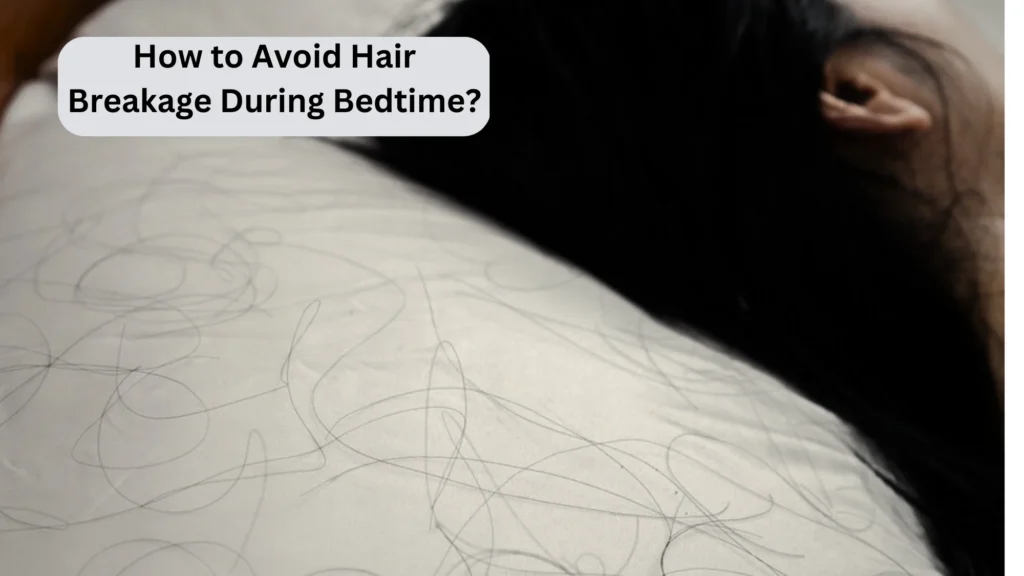
Using a silk or satin pillowcase can be beneficial for your hair. These materials are smooth and gentle on your hair, which can help reduce friction and prevent hair breakage.
If you use Cotton pillowcases, it causes friction and tugging on your hair, which can lead to breakage and damage. Silk and satin pillowcases are also less absorbent than cotton, which means they won’t absorb as much of your hair’s natural oils and moisture, helping to keep your hair healthy and hydrated. Additionally, silk and satin pillowcases can also help reduce wrinkles and acne, as they don’t absorb as much oil from your skin as cotton pillowcases do.
Avoid Tight Hairstyles
Avoiding tight hairstyles is crucial to maintain the health of your hair and scalp at bedtime. Tight hairstyles, when worn frequently or for extended periods, can cause damage, hair breakage, and even hair loss.
Tight braids can cause tension on the scalp, leading to hair loss and damage to the hairline. It’s best to avoid braids that are too tight and limit the amount of time you wear them. Never ever sleep in tight braids or tight buns as it can harm your hair follicles.
It’s essential to choose hairstyles that are gentle on your hair and scalp and allow for some movement. Loose, natural styles like beachy waves, messy buns, or low ponytails can be just as stylish and are much better for the health of your hair.
Apply Leave-in Conditioner or Hair Oil Before Sleeping
Applying a leave-in conditioner or any oil to your hair can be helpful in preventing hair breakage during bedtime. These products help to keep your hair moisturized, which can help prevent dryness and breakage. Dry hair is more prone to breakage, especially when it rubs against the pillowcase while you sleep.
Leave-in conditioners are made to provide extra moisture to your hair, helping to de-tangle, soften, and smooth your hair. These conditioners can also help to protect your hair from environmental damage and heat styling. Applying a leave-in conditioner before bedtime can help to nourish your hair overnight and keep it healthy.
Oils like coconut oil, argan oil, or jojoba oil can also be applied to the ends of your hair to keep them moisturized and prevent breakage. These oils can help to seal the hair cuticle, preventing moisture loss and breakage. Apply a small amount of oil to your palms and then gently apply it to the ends of your hair before bedtime.
Just make sure to use a small amount of leave-in conditioner or oil to avoid weighing down your hair or making it look greasy. Additionally, avoid applying these products to your scalp, as they can cause buildup and lead to clogged pores.
Also Read: Benefits of Using Jojoba Oil for Hair Growth!
Final Words
To sum up, protective hairstyles are an excellent way to prevent hair damage and promote healthy hair growth. Wearing a protective hairstyle such as a bun, twists, and braids is an effective way to protect your hair from tangling, breakage, and other forms of damage that can occur while sleeping. Choosing the best protective hairstyle to sleep in depends on various factors such as hair type, length, and personal preferences. It’s important to choose a hairstyle that allows your hair to breathe, and not too tight to avoid tension on the scalp.
FAQs
Does Sleeping in Braids Protect Hair?
Sleeping in braids can reduce friction, create waves or curls, and keep your hair in place. However, it depends on the type of braid and how tightly it is done.
How Do I Protect My Hair When I Sleep?
To protect your hair while you sleep, always use a silk or satin pillowcase to reduce friction and prevent breakage. Make loose hairstyles and avoid tight buns, ponytails, or braids that can cause tension and pull on the hair.
What is the Most Protective Hairstyle for Sleeping?
The most protective hairstyle for sleeping is a loose braid or a loose bun. These styles can help to prevent tangling, reduce friction and breakage, and keep your hair in place while you sleep.

